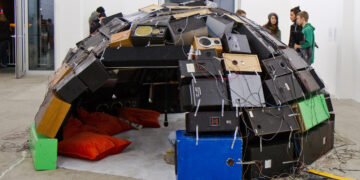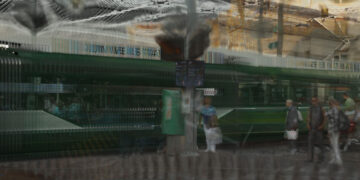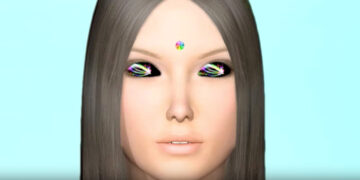The HEK is distinguished by its unique collection, which focuses on “born-digital” art, i.e. art created and located in the digital medium, often lacking any physical manifestation. The focus is on software and net-based works that rarely find their way into public collections, as their preservation requires innovative strategies and a network of experts – from conservators to programmers.
The HEK’s collection reflects the broad spectrum of media art and the use of a wide variety of digital formats – from interactive installations and videos to software-based works and net art. The focus is not on technical formats, but on questions related to socially relevant themes. These artworks address topics such as the sphere of access to information, or reflect on and develop network systems, demonstrate new aesthetic practices or enable innovative perceptual experiences. The collection consists primarily of works by Swiss artists.
Diversity in forms of artistic expression makes it necessary to set priorities. The HEK focuses on software- and net-based art, participatory or interactive art – that offer a new quality in dialogue with visitors, and on works commissioned for a site-specific context in the context of exhibitions.
A systematic approach to collecting also calls for the acquisition of central early historical works from the 1990s besides current positions.
First acquisitions were made within the framework of the trinational research projectDigitale Medienkunst am Oberrhein. Konservierung – Restaurierung – Zukunftssicherung(2010–12), which resulted in a comprehensive publication on the conservation of digital art, with the HEK’s participation with a case study and texts. Through this research project, the HEK was able to acquire the first works for a collection with funding from the Federal Office of Culture, the Kunstkredit Basel-Stadt and kulturelles.bl, the Department of Culture of the Canton of Basel-Landschaft, which are available to the HEK as permanent loans. Additional donations from the Christoph Merian Foundation followed and form the basis of the collection.
The HEK received further permanent loans from the Digital Art Collection, which was founded and built up by Annette Schindler and Reinhard Storz. This contains a number of works that were created as part of the programme of the predecessor institutions Forum für neue Medien Plug.in and Shift Festival der elektronischen Künste.
As the centre of media art in Switzerland, the HEK also has on permanent loan and takes care of all digital works from the Swiss [1] Federal Art Collection and Kunstkredit Basel-Stadt.
The HEK regularly acquires works from its own funds as with as with the support of third parties, such as the Freiwilliger Museumsverein Basel (FMB), which made three works available to the HEK on permanent loan. The FMB supports Basel’s art institutions in building their collections and acquiring important works.
The HEK’s collection includes media artworks by Swiss artists from the mid-1990s to the present day.
Correct, her handle es such um die Schweiz (Bundeskunstsammlung)
In a time of rapidly changing and ever-evolving technologies, the question of maintaining our digital heritage is of significant concern. The conservation of digital artworks presents museums and collections with new tasks: What to do when an artwork’s technology is almost out-of-date the moment it arrives in the museum? How to deal with artistic works that rely on proprietary software a manufacturer has ceased to develop or whose manufacturers no longer exist? How can net-based projects be conserved for the future?
As a forum of scientific debate and pooling of expertise, the HEK works with national and international partners on the challenges of preserving digital art.
Acquiring software- and network-based artworks is a complex process, involving many levels of planning and different parties. Each work presents its own new challenges in relation to its components. Its inventory marks the beginning of a workflow involving the HEK’s the technical staff as well as external experts such as IT managers and conservators. A collection of software- and net-based art is therefore costly to maintain and requires permanent care. An important aspect of building up the collection is the comprehensive documentation of the works and outlining of individual solutions for their preservation. To this end, the HEK cultivates exchange with national and international colleagues and invites scientific exchange and discourse with research institutions.
Various contributions on questions of the preservation and conservation of digital art – lectures, interviews, videos, texts etc. – can be found here:
Due to its unique collection of media art with a focus on software- and net-based art, the HEK is strongly committed to questions of conservation and preservation, achieving pioneering work in the field. Within just a few years, the HEK has been able to connect with an international network of museums and institutions that also maintain works of media art in their collections and carry out corresponding conservation work. The examined topics are made accessible to a broad public through a series of regular events, talks and discussions.
Among the core questions negotiated at the HEK in conferences and talk series are: What to do when an artwork’s technology is almost out-of-date the moment it is turned on? How to deal with artistic works that rely on proprietary software that a manufacturer has ceased to develop or whose manufacturers no longer exist? How can net-based projects be conserved for the future? How authentic is an interactive work once it is no longer be interacted with? How can past events and performances be documented retrospectively and made accessible for present and future generations? The HEK has to keep finding new, adapted solutions for the artworks in order to remain in step with the rapidly changing techno-cultural environment and hence be able to preserve and present the works.




